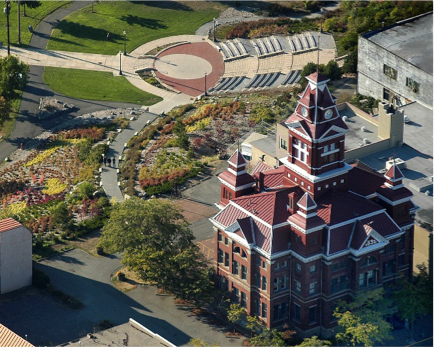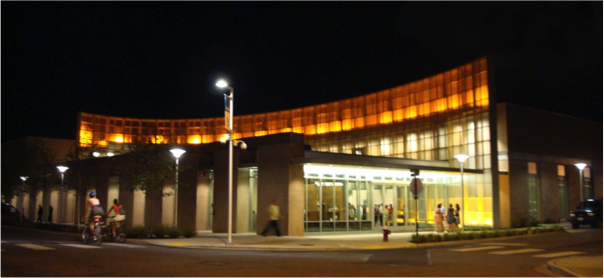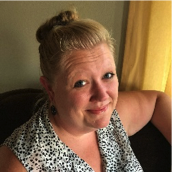by Christy Ham
While this year’s theme of the WMA Annual Meeting was Inspire, community was a hot topic of discussion, and it was one that hit home for me. I am new to the museum field and did not quite know what to expect. My adventure into the world of museum professional started in the Fall of 2017 when I took on the newly-created position of Membership & Visitor Experience Supervisor at the Whatcom Museum in Bellingham, Washington. I was tasked with the supervision of the Visitor Services Team, Membership Fulfillment, Museum Store customer service, and assisting with several activities and events. These varied and dynamic job duties have invigorated and inspired me. I was excited to learn more, and I felt that the WMA Annual Meeting was the perfect opportunity to jump start my knowledge in the field, as well as provide insight in determining my path forward. And boy, did it do that! Not only did I find a friendly and welcoming community of museum professionals, but many of the session topics and conversations involved our greater communities, particularly how to better engage and inspire the diverse neighborhoods, towns, and cities that we serve.
 I choose to live in the town I grew up in. I actually work at a place I went to on school field trips as a kid. I nerd out on local history and quirky facts. I have also lived in other places, both large and small. I have been privileged to be able to travel around the country and experience other communities, but nothing is quite like my hometown. Bellingham’s unofficial motto is the “City of Subdued Excitement,” which is just my speed. It’s amazingly scenic, nestled in between the Cascade Range and the Salish Sea. Recreational opportunities abound from just about anything you want to do outside to a thriving music, theater, food and beverage (beer!) scene, and of course, museums. But what truly keeps me here is a real sense of community, with people who care about one another and about the beautiful place we live in. It is more than just the neighborhood block parties or city-wide festivals (although they are pretty great), but a true desire to contribute, take part in, and empower our fellow community members. When I applied for my position at the museum, I thought, this is it, here is a front and center community organization that I would get to be right in the middle of. This is going to be fantastic. And it is fantastic, but…
I choose to live in the town I grew up in. I actually work at a place I went to on school field trips as a kid. I nerd out on local history and quirky facts. I have also lived in other places, both large and small. I have been privileged to be able to travel around the country and experience other communities, but nothing is quite like my hometown. Bellingham’s unofficial motto is the “City of Subdued Excitement,” which is just my speed. It’s amazingly scenic, nestled in between the Cascade Range and the Salish Sea. Recreational opportunities abound from just about anything you want to do outside to a thriving music, theater, food and beverage (beer!) scene, and of course, museums. But what truly keeps me here is a real sense of community, with people who care about one another and about the beautiful place we live in. It is more than just the neighborhood block parties or city-wide festivals (although they are pretty great), but a true desire to contribute, take part in, and empower our fellow community members. When I applied for my position at the museum, I thought, this is it, here is a front and center community organization that I would get to be right in the middle of. This is going to be fantastic. And it is fantastic, but…
I was brought a little more down to earth from my pie in the sky assumptions when I excitedly told my friends and associates that I had gotten a job at the museum and their replies ranged from “we have a museum?” to “oh, I never go there.” Wait, what? My super community-focused community to end all communities didn’t know about or care to visit one of our most amazing cultural resources? Let’s not take that “subdued” thing too far. I was so confused and a little dismayed. Never one to turn down a challenge, I instantly set out to get everyone to visit the museum. Needless to say, my fervent enthusiasm was met with some resistance. I started to get the “yeah we know, the museum is cool” eye roll from friends and family. My co-workers started to give a strong “slow your roll, new kid” vibe. In hindsight, rightfully so, after all I was new: new to the field, new to the team, and operating under the assumption that my excitement and enthusiasm were the only tools I needed. I took a step back. I would focus on the execution of my daily tasks, and I would watch and learn.
Fast forward nine months. I have settled in to my daily tasks, the team that I supervise is doing well, I am still watching and learning. The community conundrum is still lingering in the back of my mind though. I knew I needed more resources, more tools, more knowledge to figure this one out. I was mulling over just how to get there when I heard about the WMA Annual Meeting and the opportunity for the Wanda Chin Professional Development Scholarship at a staff meeting. I thought, why not apply, I could learn more about my new field, hopefully meet a few people and see what happens. I was accepted and the “see what happens” attitude turned into an incredible whirlwind of networking, info gathering, and inspiration. I started off by attending the Speed Networking session. “Meeting a few people” turned into meeting 30 plus museum professionals (in about 60 minutes) from across the country, learning their stories and why they were there. I realized quickly that I was not alone, that there were many great museums in great communities that were constantly trying to engage their communities more effectively. In the session When Museums and Communities Connect, presenters Cassie Chinn, Joanne Jones-Rizzi, and Lorie Millward all spoke at length about the need to go out into our communities. This is not a metaphor, we need to actually leave, step outside our doors, and go to where our communities are. We need to leave the concept of “if we are [good, edgy, popular, provocative, cheap, relevant] enough” then the community will be drawn in. “Build it and they will come” may work for a classic 80s movie, but it doesn’t work for museums. This approach was reiterated in the session Museum After Hours: Successful Adult Programming, when Allison Campbell of Fort Nisqually Living History Museum spoke about sourcing sponsorships and creating successful partnerships with local resources to extend their reach into the community. These sessions, and many others addressed that nagging conundrum of how to get everyone through the door and pushed it to the forefront of my mind. I was once again inspired to engage the community—my community—this time with some deeper insight, shared experiences, and a few more tools.
 So, where do we go from here? Don’t get me wrong, we have a strong membership program, good visitor numbers, and a reenergized education department that is exploring new programs for school-aged children, as well as adults. We have surveyed our visitors and tracked numbers, comments, and feedback. Yet there still seems to be a void with certain groups and demographics. Aldona Jonaitis of UoA Museum of the North summed it up in the general session Deconstruction/Rebuilding Museums of Tomorrow; it takes letting every member of the community know that “YOU” are particularly welcome. To do that you have to start with not-so-easy conversations and be willing to voice hard truths. As Dana Whitelaw of the High Desert Museum said in the session Learning to Lead from the Middle, “be brave, be candid, be vulnerable.” From this place things start to happen, and I have already seen that with our team. The conversation about adopting an equity and community statement has begun. The conversation about being more welcoming to populations with disabilities has begun. The conversation about our visitors experiences and take-aways has also begun. The key is to keep these conversations going, taking them out into the community, and being willing to listen.
So, where do we go from here? Don’t get me wrong, we have a strong membership program, good visitor numbers, and a reenergized education department that is exploring new programs for school-aged children, as well as adults. We have surveyed our visitors and tracked numbers, comments, and feedback. Yet there still seems to be a void with certain groups and demographics. Aldona Jonaitis of UoA Museum of the North summed it up in the general session Deconstruction/Rebuilding Museums of Tomorrow; it takes letting every member of the community know that “YOU” are particularly welcome. To do that you have to start with not-so-easy conversations and be willing to voice hard truths. As Dana Whitelaw of the High Desert Museum said in the session Learning to Lead from the Middle, “be brave, be candid, be vulnerable.” From this place things start to happen, and I have already seen that with our team. The conversation about adopting an equity and community statement has begun. The conversation about being more welcoming to populations with disabilities has begun. The conversation about our visitors experiences and take-aways has also begun. The key is to keep these conversations going, taking them out into the community, and being willing to listen.
I am honored to have received the Wanda Chin Professional Development Scholarship, which made it possible for me to attend the 2018 WMA Annual Meeting. I was truly inspired, and my enthusiasm was refueled. I am still watching and learning, which will never end, but I now have a better understanding of what it will take to truly engage my community. It won’t happen instantly, and it will take more than just sheer willpower, but it can happen; it will happen. Even in a town that doesn’t get too worked up about having a good time.
 Christy is the Membership & Visitor Experience Supervisor at the Whatcom Museum in Bellingham, Washington. New to the museum field, she joined the Whatcom Museum team in September 2017 and is looking forward to many more years as a museum professional. She comes from a background of design and project/people coordination.
Christy is the Membership & Visitor Experience Supervisor at the Whatcom Museum in Bellingham, Washington. New to the museum field, she joined the Whatcom Museum team in September 2017 and is looking forward to many more years as a museum professional. She comes from a background of design and project/people coordination.








Add new comment